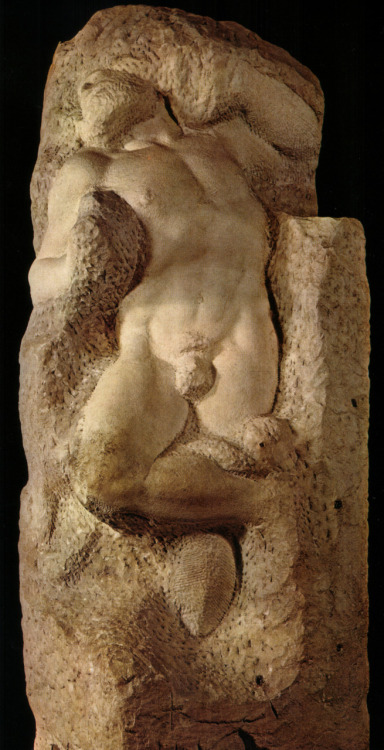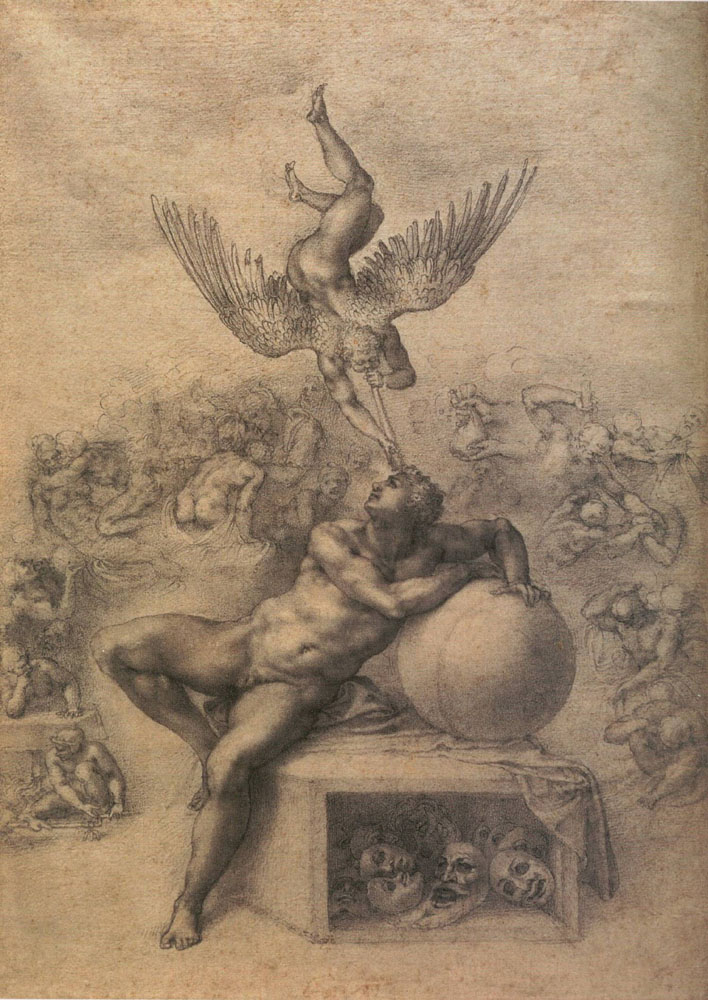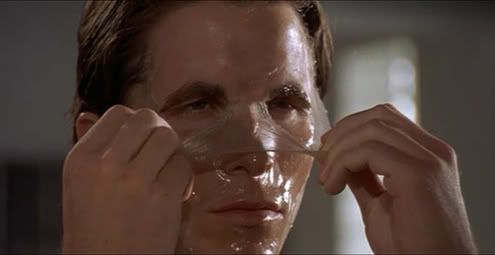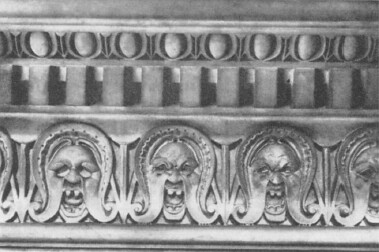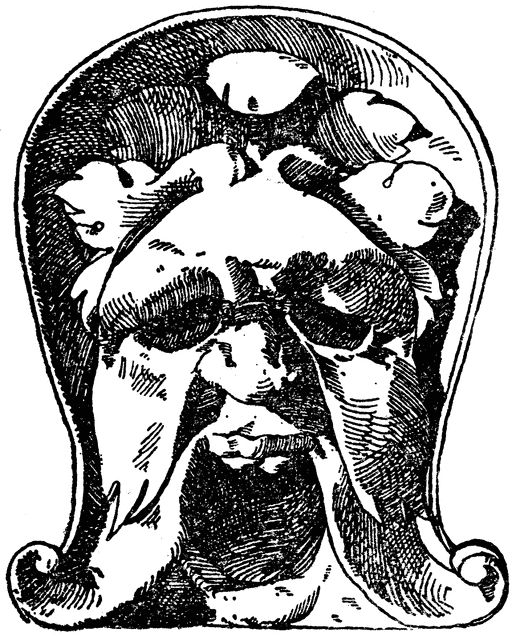Introduction: Masks and Masking
Part 1: The Metaphor
Part 2: The Mask that Fits
Part 3: Ontology
Part 4: Masquerade of the Gods
Part 5: Mask of Sanity
Part 6: The Material Mask
I had initially intended to use more examples to plumb further the nature of mask, such as Batman and the villains he fights, MirrorMask and the mirror and the abyss, Nietzsche and some of the things he had to say, drawing and photography (art), et cetera. But upon further reflection I feel that they only reinforce ideas we have already covered, and therefore add nothing new to this exploration. I might perhaps toss some examples from those in to reinforce some other ideas we will get into, but nothing that will be looked at in depth. I really would like to wrap this little study up, so I only have in mind this post and one other. For this post we will revisit Michelangelo's New Sacristy in the Medici Chapel of San Lorenzo in Florence. What is of concern here is the two statues on Giuliano de Medici's tomb of Day and Night. We will focus on how Thomas Mann thought of Day and Night, and how the two are identical masks, but with opposing qualities.
Let's ask a silly question: does night mask the day? or does the day mask the night? Better yet, which masks and unmasks the other? Is one a mask and the other not? Seems like another chicken-and-the-egg question, but if we consider both as masks for the other something new is revealed. The day, revealing the radiance and warmth of the sun, does in fact masks the glittering brilliance of the nightly stars. On the other hand the night conceals the sun and reveals the shimmering stars and the face of the moon. Night and day are not masks for each other, but merely a process of masking. This introduces us to what is known as "fuzzy logic."
Fuzzy logic is a philosophy that involves things not having binary answers: yes and no, right and wrong, hot and cold. Fuzzy logic involves answers like both and neither, less or more, maybe and probably, et cetera. Sometimes is can be either and neither at the same time given the problem. The idea is that sometimes things are not always one or the other, but somewhere in between. Zedeh, one of the pioneers of fuzzy logic, used temperature as an example. He would ask his kids if it was cold or hot, but sometimes it was somewhere in between. Sometimes it's less hot than cold, or more cold than hot, but it wasn't exactly hot or cold. In our case the day is not the mask, nor is night, but rather both are the mask of each other.
Thomas Mann, in his Joseph and His Brothers, says that day is the liar, while night reveals what things truly are. While I doubt Mann truly felt this way, in that I doubt he believed that the day was the liar and night was not, especially given what he discusses about solar cults of Egypt in Part 3 and 4, nonetheless he does give insight into which quality of things are revealed or concealed at night or during the day. Mann says that the day distracts us with details and differences between things, which the night reveals that they are the same thing. He describes this when he discusses Jacob's marriage to Rachel, which was deceived by replacing Rachel with Leah in the dark bedroom. Because it is night and there are no candles in the room Jacob cannot tell the difference between Leah or Rachel. He compares this Biblical tale to Osiris's accidental affair with his brother's wife, Nephthys. It was night and Osiris was chasing his wife, Isis, in order to have sex with her. But Osiris accidentally caught Set's wife, Nephthys, and had sex with her, and she thought Osiris was Set. (By the way, Osiris, Set, Nephthys, and Isis are all brothers and sisters, but whatever). According to Mann the day distracts us with the difference between this man and that man, or this woman and that woman. Night reveals that they are the same. Night conceals what the day distracts us with and reveals that this woman is no different from that woman, Isis is no different from Nephthys, Rachel is no different from Leah. They are all women. Day is sort of like missing the forest for the trees: there is this tree and that tree, but ultimately they are trees and they make up forests.
I hope I'm not entirely misrepresenting Mann's opinion of night and day. Mann felt that night reveals by concealing the day. In a sense, the mask reveals by concealing, and the day conceals by revealing. By concealing the differences we see during the day between this person and that person another quality is revealed. This is what masks do: they reveal by concealing, and conceal by revealing. It is misguided to think of the mask as a concealer of truth. That's a binary conclusion to give something as powerful and wonderful as the mask. No, rather the mask abides to fuzzy logic: it reveals and conceals, and it does one by doing the other; it is both and neither simultaneously.
Is it any wonder then that Master Buonarroti depicts both Night and Day masked and unmasked? Night's face is refined and polished, but also has a mask. Day does not have a mask, but his face is unfinished, obscured, and never fulled revealed from the stone he was carved from. Michelangelo learned from his sculpting master, Bertoldo, that the figure was in the stone, waiting, sleeping, and needing to be released. Day is masked, but has not mask. Night has a mask, but is unmasked. One reveals what the other conceals.
I suppose the same relationship of revealing is concealing and vice versa exists in the difference between drawing and photography. I believe it was Paul Clave (I'm not sure if I have his last name correct) who said that all art was a process of concealing, except photography, which can only reveal. Photography is like the mirror, in that it can only reveal what it is presented with. When we draw or paint or sculpt we are not always being honest. We might alter the proportions, exaggerate the light and shadow, omit or add to the models we use, et cetera. I suppose this is why Michelangelo always felt that sculpture was superior to painting. Painting is a matter of creating illusions of space, form, perspective, and light - a masking (lie) of features that are not true on a flat surface. Sculpture, on the other hand, is honest to space and form and light. It is a revealing. This is perhaps why Micky often left many figures unfinished, as if they were not completely revealed from the rock. They are part of a series called "Prisoners" for Pope Julius II's tomb. Michelangelo is revealing something by not fully revealing their forms. If sculpture is an unveiling, then what is revealed if revealing is concealing? To leave the Prisoners concealed Michelangelo is revealing. What exactly is being revealed I am not totally sure of (I've never spent a significant amount of time with the Prisoners), but I imagine in a way he was saying something about masking; the same sort of masking and unmasking is played with for the egg and dart modeling for the New Sacristy: the egg/mask is revealing another mask.
In summation the mask and the face are not necessarily important, because sometimes all we have are masks. This is really the nature, the essence (esse) of the mask: it isn't about what the mask reveals or conceals, rather it is that the mask reveals and conceals. It matters little that we put a smile on our faces when we are actually upset. What matters is that we are hiding an emotion by revealing a different one (signified verses signifier). It doesn't matter if the night masks the day, or the opposite. What matters is that they mask one another, concealing and revealing different aspects of reality depending on the mask. The mask almost does not matter anymore, but rather that we are masking is what matters. I think this could be summarized best from Batman Begins: "It's not who you are underneath but what you do that defines you." In other words: it's not what's under the mask, but what the mask does that defines the actor and the mask.


